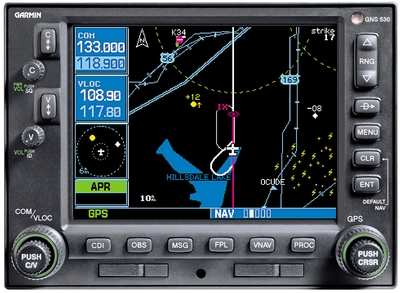Wed, May 26, 2004
E-2 Program Prototypes Applying Lessons Learned In Recent
Conflicts
The Naval Air Systems Command has successfully prototyped a
commercial navigation system currently installed in two of the US
Navy’s E-2C Hawkeye aircraft. The GNS-530, originally
produced for commercial aviation applications by Garmin
International of Olathe, Kansas, will bring dual utility to the
Hawkeye cockpit by simultaneously satisfying Communication,
Navigation and Surveillance/Air Traffic Management (CNS/ATM)
enhanced display requirements while also providing precision
approach to the E-2C Fleet.

The possibility of incorporating the GNS-530 navigation system
into the E-2C was explored following a NAVAIR analysis of
alternatives to identify a system that could provide precision
approach capability to the E-2C fleet quickly and cost effectively
and address lessons learned during Operations Enduring Freedom and
Iraqi Freedom.
Two aircraft were prototyped with the system. The first, based
in Atlanta (GA) with the Night Wolves of Carrier Airborne Early
Warning Squadron Seventy Seven (VAW-77), one of two E-2 Reserve
squadrons, demonstrated that the GNS-530 could be successfully
installed quickly and cost efficiently. The second prototype,
representative of Group II aircraft in the Fleet, was based in
Norfolk (VA) with the Greyhawks of Carrier Airborne Early Warning
Squadron One Hundred Twenty (VAW-120). This aircraft was selected
for Carrier Suitability tests with the system at NAS Patuxent
River, where testing verified its ability to withstand the rigors
of operating in a carrier environment. These two proof-of-concept
demonstrations proved so successful that both prototyped aircraft
are presently utilizing the system.

Additional test events at Patuxent River are planned this summer
with the Hawkeye 2000 variant of the aircraft, which will be
focusing on IFR certification and Electromagnetic Compatibility
(EMC). Fleet installations of the GNS-530 in E-2C Hawkeye aircraft
are anticipated to begin in 2005.
More News
Its Offerings Are Lighter, Cleaner, and Now Pushing Past 1,000nm on SAF Jet Fuel DeltaHawk’s diesel-powered aircraft lineup has seen incredible upgrades over the last few yea>[...]
The Airplane Experienced A Total Loss Of Engine Power On December 3, 2025, about 1600 central standard time, a Mooney Aircraft Corp. M20K, N57229, was substantially damaged when it>[...]
Make Sure You NEVER Miss A New Story From Aero-News Network Do you ever feel like you never see posts from a certain person or page on Facebook or Instagram? Here’s how you c>[...]
Aero Linx: European Society of Aerospace Medicine (ESAM) As a pan-European, independent forum, it works to promote the safety and health of all persons involved in aviation and spa>[...]
“We are excited to see Wisk achieve this milestone, and I’m so proud of the team that made it possible. The team at Wisk has built advanced technologies across flight c>[...]
 Aero-TV: DeltaHawks Diesel Power Steps Into the Spotlight
Aero-TV: DeltaHawks Diesel Power Steps Into the Spotlight NTSB Prelim: Mooney Aircraft Corp. M20K
NTSB Prelim: Mooney Aircraft Corp. M20K ANN FAQ: Turn On Post Notifications
ANN FAQ: Turn On Post Notifications ANN's Daily Aero-Linx (12.20.25)
ANN's Daily Aero-Linx (12.20.25) Aero-News: Quote of the Day (12.20.25)
Aero-News: Quote of the Day (12.20.25)




